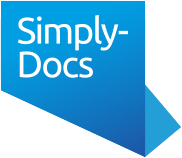Following the introduction of Shared Parental Leave (SPL) in April 2015, the Government has announced proposals to extend SPL and pay to working grandparents. The proposal stems from the Government’s over-arching aim to increase flexibility and choice in parental leave arrangements and support working parents with the provision of affordable childcare during the first year of their child’s life. In making the proposal to extend SPL, the Government has said that it recognises the crucial role that working grandparents can play in providing childcare and support to their own working children.
SPL was introduced as a means of enabling working mothers to end their maternity leave early in order to share leave and pay with their partner. SPL is currently available only to mothers, fathers, partners and adoptive parents but, by being able to share the SPL with the child’s grandparents, it will provide another option for parents to return to work more quickly. As a helpful by-product, it should also encourage more grandparents to remain in employment, rather than leaving their jobs to help with childcare.
What does this mean for the employer?
Although the extension of SPL has been seen as good news for many working parents, it may be more problematic for employers. With an ageing workforce, the number of working grandparents who may benefit from the proposed extension will be significant: research from the Trade Union Congress indicates that some 7 million grandparents are involved in providing regular childcare to their grandchildren and so allowing their own children to return to work.
If the proposals are implemented, the provisions are likely to be in line with the current statutory SPL scheme and so the entitlement to take SPL will be shared with the child’s eligible grandparents: the grandparents may be able, potentially, to share up to 50 weeks’ SPL. Additionally, eligible grandparents may be able to share up to 37 weeks’ statutory shared parental pay (statutory shared parental pay is currently set at £139.58 a week or 90% of weekly earnings, whichever is the lower). If employers have enhanced provisions for shared parental pay, as they do with, say, maternity pay, they will need to take the same approach with this new entitlement to shared parental pay. This would, of course, add further costs for the employer.
Timescale for new SPL proposal.
As things stand at present, it is intended that the proposal to extend SPL and pay to grandparents will:
• be consulted on during the first half of 2016;
• be brought into effect by 2018; and
• affect working grandparents only.
Employees already have the right to take unpaid emergency leave to care for dependants and to request flexible working provided that they have the required length of service. What do you think the impact of the proposed extension of SPL to grandparents will be for your business?
